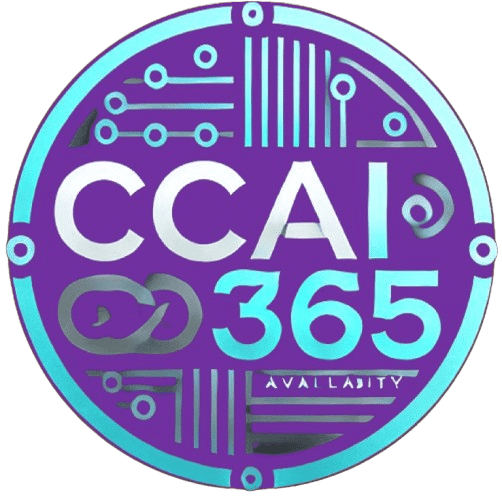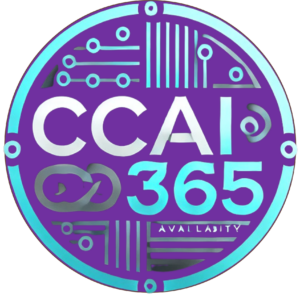Surviving the AI Transition
The rise of artificial intelligence (AI) is transforming the way businesses operate, creating both opportunities and challenges for small business owners. As AI-driven tools and automation become more prevalent, entrepreneurs must adapt to stay competitive in an evolving landscape. While some fear AI may replace jobs, the reality is that AI is more likely to enhance productivity, streamline operations, and open new revenue streams for businesses willing to embrace change.
Small business owners must understand how AI is reshaping the future of work and learn how to leverage it effectively. This article provides a roadmap to surviving and thriving in the AI transition, offering insights into what AI means for small businesses, dispelling common misconceptions, and providing practical strategies for success in the AI-driven economy.
How AI is Reshaping the Business Landscape: What Small Business Owners Must Know
Artificial intelligence is no longer a futuristic concept—it is a present-day reality that is already reshaping industries worldwide. Small businesses, in particular, stand to benefit from AI’s capabilities in automation, data analysis, and customer engagement.
AI’s impact on the business landscape includes:
-
-
-
Enhanced Efficiency: AI-driven automation eliminates repetitive tasks, allowing small business owners and employees to focus on high-value activities.
-
Improved Decision-Making: AI-powered analytics provide data-driven insights, helping businesses make more informed strategic decisions.
-
Cost Savings: Automating processes reduces operational costs and minimizes human errors, increasing profitability.
-
Customer Experience Transformation: AI enables personalized marketing, chatbots for customer support, and predictive analytics to anticipate customer needs.
-
-
For small business owners, integrating AI into daily operations is no longer optional—it is a necessity for staying relevant in a competitive market. Those who adapt will gain an edge, while those who resist risk falling behind.
AI and the Future of Work: Separating Hype from Reality for Small Businesses
There is no shortage of hype surrounding AI, and misinformation can make it difficult for small business owners to determine what is true and what is exaggerated. While some fear that AI will replace jobs entirely, the reality is more nuanced.
Common AI Myths vs. Reality
Myth: AI will eliminate all jobs
Reality: AI is more likely to augment human workers by automating repetitive tasks, freeing employees to focus on creative and strategic work.
Myth: AI is only for large corporations
Reality: Affordable AI solutions are now available for small businesses, including chatbots, automated marketing, and AI-driven data analytics.
Myth: Implementing AI is too expensive
Reality: Many AI tools are cost-effective, with scalable pricing models designed for businesses of all sizes.
Myth: AI is difficult to integrate
Reality: Many AI-powered platforms are user-friendly and designed for seamless integration with existing business operations.
By understanding the true potential of AI, small business owners can make informed decisions about adopting AI solutions without being misled by common misconceptions.
Leveraging AI to Automate Tasks, Reduce Costs, and Drive Growth
One of the biggest advantages of AI is its ability to automate tasks, allowing businesses to operate more efficiently while reducing costs. Small businesses can implement AI in several key areas:
1. AI for Administrative Tasks
-
-
-
Automate email responses and scheduling with AI-powered virtual assistants.
-
Use AI-driven document management tools to streamline paperwork.
-
Implement AI-powered bookkeeping software to track expenses and generate financial reports.
-
-
2. AI for Sales and Marketing
-
-
-
Personalize customer interactions using AI-driven email marketing and customer segmentation.
-
Optimize advertising campaigns with AI-powered analytics to maximize ROI.
-
Use chatbots for instant customer engagement and lead generation.
-
-
3. AI for Customer Support
-
-
-
Deploy AI chatbots for 24/7 customer assistance.
-
Use AI-powered sentiment analysis to improve customer service responses.
-
Implement automated ticketing systems to streamline support inquiries.
-
-
By leveraging AI strategically, small businesses can increase efficiency, improve customer experiences, and ultimately drive sustainable growth.
Overcoming Resistance to AI Adoption: Shifting Mindsets and Embracing Change
Despite AI’s clear benefits, many small business owners resist adoption due to fear of change, lack of technical expertise, or concerns about job displacement.
Overcoming Common AI Adoption Barriers
-
-
-
Fear of Job Loss: Emphasize AI as a tool for enhancing human productivity rather than replacing employees.
-
Lack of Technical Knowledge: Start small with AI tools that require minimal technical expertise.
-
Resistance to Change: Educate employees on AI’s benefits and involve them in the transition process.
-
Cost Concerns: Begin with affordable AI solutions that provide quick returns on investment.
-
-
AI adoption requires a shift in mindset—rather than viewing AI as a threat, small business owners should see it as a valuable asset that enhances operations and competitiveness.
Preparing for the AI-Driven Future: Actionable Steps for Small Business Success
To thrive in an AI-driven world, small business owners must take proactive steps to integrate AI into their operations and workforce strategies.
1. Assess AI Readiness
-
-
-
Identify areas where AI can improve efficiency and customer engagement.
-
Evaluate current workflows and pinpoint repetitive tasks that AI can automate.
-
-
2. Start Small and Scale Up
-
-
-
Implement simple AI tools such as chatbots or automated invoicing before expanding to more complex solutions.
-
Choose AI applications that align with business goals and customer needs.
-
-
3. Invest in Employee Training
-
-
-
Upskill employees to work alongside AI and leverage AI-powered tools effectively.
-
Encourage a culture of innovation by fostering AI literacy among team members.
-
-
4. Stay Informed About AI Trends
-
-
-
Keep up with AI advancements and emerging technologies relevant to small businesses.
-
Join AI-focused business communities and attend industry events to stay ahead of the curve.
-
-
By taking these proactive measures, small businesses can future-proof their operations and remain competitive in the AI-driven economy.
Conclusion
The future of work is being shaped by AI, and small business owners must adapt to remain competitive. While AI brings challenges, it also presents immense opportunities for efficiency, cost savings, and growth. By understanding AI’s impact, dispelling myths, leveraging automation, overcoming resistance, and preparing strategically, small businesses can not only survive the AI transition but thrive in it.
Embracing AI is no longer optional—it is a necessity for businesses that want to succeed in the modern economy. Now is the time to take action and integrate AI into your business operations.
Contact CCAi365 at 252-668-1640 to start your AI journey and increase your business!


